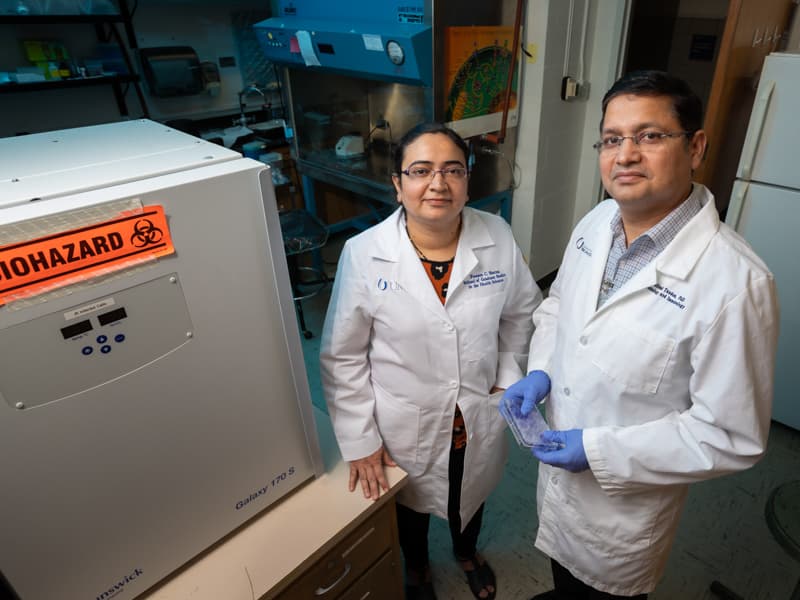UMMC scientist's research may help future Moon, Mars missions

As this decade ends, the National Aeronautics and Space Administration is looking forward to its next mission: to send its next man and first woman to the Moon by 2024. One University of Mississippi of Medical Center scientist is part of the effort to ensure the safety of those astronauts.
Dr. Ritesh Tandon, associate professor of microbiology and immunology, received a grant from NASA to study the effect of space radiation on human cytomegalovirus, or CMV.
“When you send humans to space they are exposed to radiation, micro-gravity and stress,” he said, “but radiation is the most devastating effect.”
That’s because space radiation can have serious health impacts. According to NASA, astronauts may face higher lifetime risk of cancer, nervous system problems and degenerative diseases because of the exposure to radiation without the Earth’s protective atmosphere.

“You can put in all of the protections you want,” Tandon said, but space radiation can still get past barriers. Just like radioactive materials on earth, space radiation can alter DNA or RNA from any organism, whether it be a human or a virus.
Most people – and presumably, most astronauts – contract CMV during their life, but don’t experience any serious health effects. It’s a “good parasite,” Tandon says, meaning that it typically doesn’t cause illness in its host. However, in people with weakened immune systems, it has the potential to infect organs and cause serious health problems.
The combination of stressors astronauts face in space could change how CMV functions and create a health risk, Tandon said. His lab will be examining how space radiation affects two viral functions. The first is reactivation, or the ability to go from a latent, or dormant, state to an active one. The other function they will study is lytic replication, or how the virus makes more copies of itself in order to spread throughout and beyond its host.
For the experiments, “We will expose cells with latent CMV to space-like radiation and determine how it changes the DNA and RNA,” Tandon said. The samples aren’t going to space. Instead, they are going to NASA’s Space Radiation Laboratory at Brookhaven National Laboratory in New York.
Then, collaborators at NASA and the University of Arizona will study how radiation affects the immune cells that normally keep latent viruses in check, and determine if those nucleic acid changes activate the virus in a way that makes it more likely to cause illness or infect others.
“There is some evidence to suggest that radiation can activate the virus,” Tandon said. In March 2019, NASA scientists found that more than half of astronauts shed reactivated herpesviruses after they returned from space. This included viruses such as CMV or varicella-zoster, which causes chickenpox and shingles.

Dr. Satish Mehta, senior author of the March study and one of Tandon’s collaborators for this grant, said that this could also pose health risks to people that astronauts encounter after they return from space, including infants and people with weaken immune systems.
“The ideal countermeasure is vaccination for astronauts—but, so far, this is available only against one variety of the eight herpes viruses [varicella],” Mehta said.
Tandon’s grant is meant to support NASA’s Artemis program, which aims to develop a “sustainable human lunar presence” by 2028. The science and engineering developments from the mission will form the basis for crewed missions to Mars in the 2030’s, the agency said. That journey, which will take years, will require even more precautions for the health and wellness of the astronauts. For example, Mehta’s study showed that the longer astronauts were in space, the more likely they were to shed viruses.
“Through this project and others, NASA is doing everything they can for the safety of the astronauts,” Tandon said.

